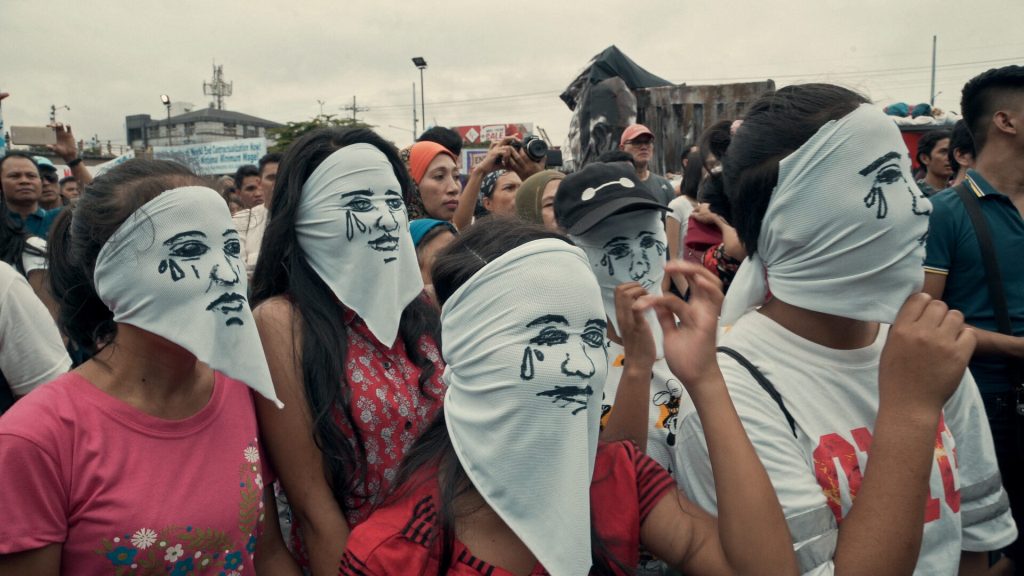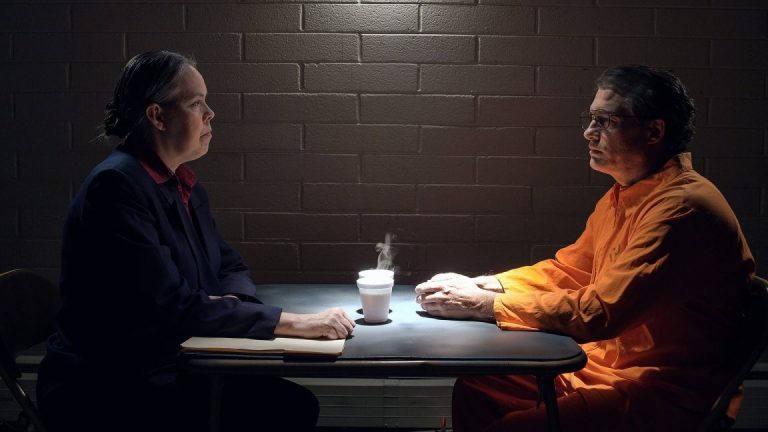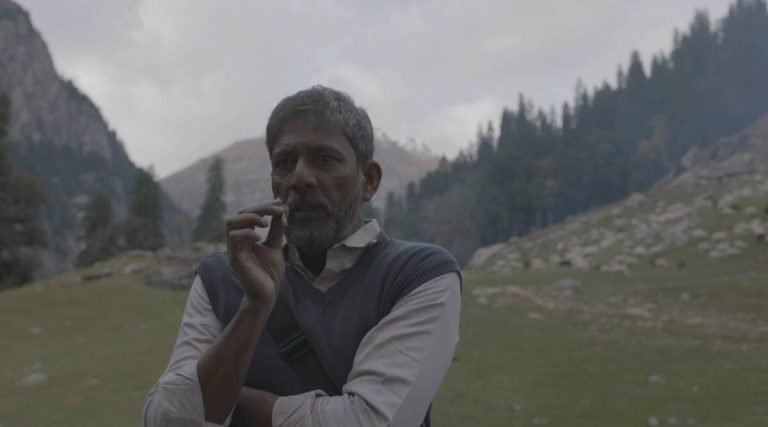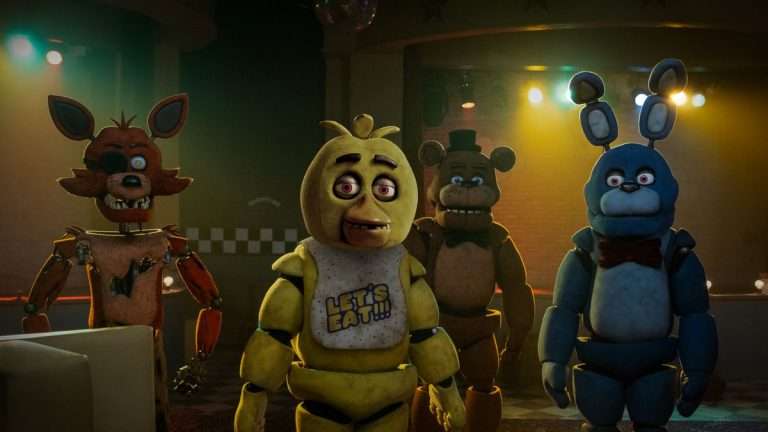Filipino President Rodrigo Duterte’s regime (2016-2022) garnered the world’s attention due to its utter disregard for human rights and extrajudicial killings. Immediately upon coming to power, the provocative yet popular leader kept up his promise of resorting to violent measures in order to solve the nation’s drug problem. However, Rodrigo Duterte’s ‘war on drugs’ soon became the ‘war on the poor and underprivileged.’ Blood was literally running in the streets, and the dark days of Philippine democracy began. Alyx Ayn Arumpac’s debut documentary Aswang (2019) offers a stirring and enraging ground report on the country’s brutal war against the poor.
To better understand the decline in Philippine democracy and the populist authoritarian rule of Duterte, Lauren Greenfield’s The Kingmaker (2019) and Ramos Diaz’s A Thousand Cuts (2020) are must-watch documentaries. The latter of the two chronicles the uphill battles of Nobel Peace Prize-winning journalist Maria Ressa against the ruthless Duterte regime. Arumpac’s Aswang follows a group of selected individuals whose lives are directly impacted by the corrupt and violent police force. The title refers to an evil shape-shifting spirit in Filipino folklore, which preys upon humans after nightfall.
Arumpac’s Aswang opens with the shot of a flashing police siren, and the voice-over talks about the dreaded monster. Then it cuts to the images of a crime scene. Under the cover of darkness in the slums, the blood of the poor flow profusely. The reason isn’t the mythical shape-shifter but an elected human (?) President and his blood-thirsty minions prowling Manila’s dilapidated streets. Duterte regime’s wave of extrajudicial executions targeted the suspected drug users and peddlers hailing from impoverished neighborhoods. The drug lords, however, remained scot-free.
The killings are carried out by vigilante death squads which have strong ties to law enforcement. The government data says that between 6,000 and 7,000 people have lost their lives to extrajudicial killings. But human rights organizations and activists estimate up to 30,000 lives perished due to Duterte’s ‘war on the poor.’ At the same time, in Aswang, a radio news report says that more than 85 percent of the populace supports the government’s extreme anti-drug campaign. A man, who has lost his brother to the extrajudicial killings, says with tears, “I’m for Duterte, but what they did to my brother was wrong.”
The violent populism of Duterte is complex to understand. But in general, the mass killings ordered by the allegedly macho leader began with extreme categorizations of the poor as the ‘criminalized others.’ The poor themselves are also swayed by populism, where they unwittingly consent to their annihilation. In Aswang, Arumpac’s camera travels through the dark, garbage-filled alleyways of Manila slums to document such dehumanization. Funeral parlors struggle to handle the constant overflow of bullet-pierced bodies from the morgue. Children of the neighborhood carry makeshift machetes and guns while playing a game of police and criminals. Adults dwelling in the makeshift warrens uses drugs despite the fear because their everyday life is so difficult that they are reluctant to quit this only vice and pleasure.

Jun, a photojournalist and a priest, closely works with the traumatized slum families affected by Duterte’s war on drugs. Moreover, he visits the crime scenes, documents each case, and toils hard to bring it to the attention of human rights organizations. But the primary focal point of Arumpac’s Aswang is Jomari, a six or seven-year-old boy whose parents are incarcerated for drug-related crimes. Though a relatively resourceful street-smart kid, watching the vulnerable boy roaming through the shantytown deeply unnerves us. We first see him at the funeral of a teenager who was murdered by Duterte’s death squad. Jomari addresses the boy as his “only friend in the world.” Kids of his age tease him about his addict mother and father being in jail. But with hope and joyful glee, Jomari visits his mother every Saturday.
In Aswang, director Arumpac weaves a tapestry of injustice, violence, and trauma in Duterte’s Philippines. In fact, Jomari’s life is a stark representation of the torment and uncertainty faced by the Philippine poor. It’s a heartbreaking moment when Jomari asks Arumpac to buy him a flip-flop before visiting his mother. Later in the documentary, the boy goes missing, and we tensely wait to hear some news about Jomari. Aswang ends on an optimistic note in relation to Jomari. However, the machinery of violence will always loom over the poverty-stricken districts.
A shocking episode ensues by the end of Aswang, which showcases how the system of extrajudicial killings has normalized the abuse of power. Based on the testimony of a woman, human rights activists and journalists storm into a police precinct and find a secret cell hidden behind a cabinet. Police have kidnapped these poor people to extort money, and if their demands aren’t met, they are threatened with false drug charges. Though the captives are freed from the dark secret cell and talk about their gruesome experiences, in a cruel twist of fate, the police charge them with cases and officially arrest them.
Rodrigo Duterte’s regime has come to an end. Ferdinand ‘Bong Bong’ Marcos Jr. (son of the ruthless former Philippine dictator) became the President of the Philippines on June 2022 (Rodrigo’s daughter Sara Duterte is the Vice-President). Of course, the state-sanctioned oppression and terror won’t abruptly come to an end. In fact, nothing hopeful can be expected from a government that treats drug addiction – a health and social issue – as a facade to carry out mass murders.
Related to Aswang: Welcome to Chechnya [2020] Review – Shines a Light on One of the Most Appalling Humanitarian Crises of Present Times
Aswang (2019) can be watched at iwonder
Interested viewers can avail 50% percent discount on iwonder subscription:




![Mahaan [2022] ‘Prime Video’ Review – Calling It ‘Ridiculous’ is an Understatement](https://79468c92.delivery.rocketcdn.me/wp-content/uploads/2022/02/Mahaan-2022-768x432.jpg)
![Delphine [2019] ‘TIFF’ Review: The Purity of Childhood & The Arbitrariness That Follows](https://79468c92.delivery.rocketcdn.me/wp-content/uploads/2019/09/Delphine-2019-768x384.jpg)


